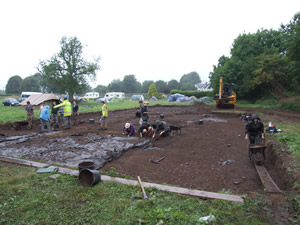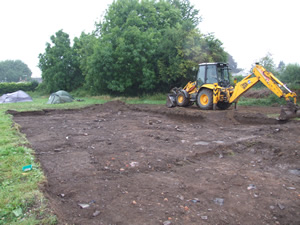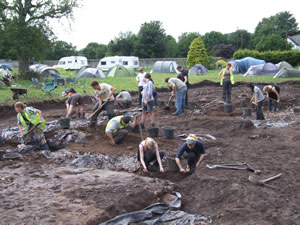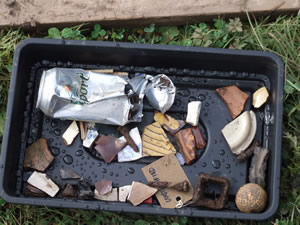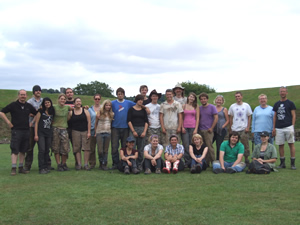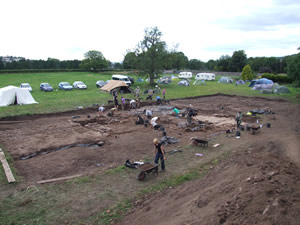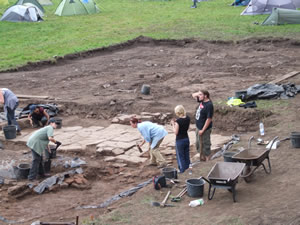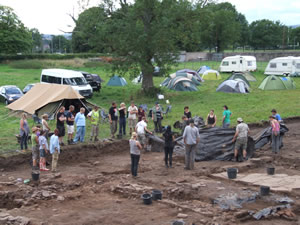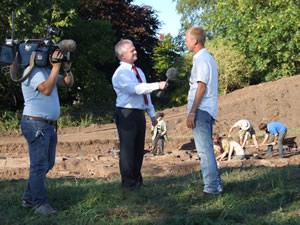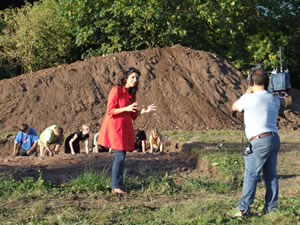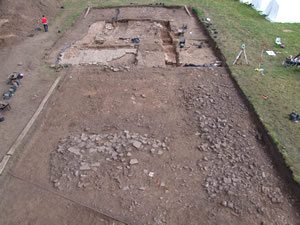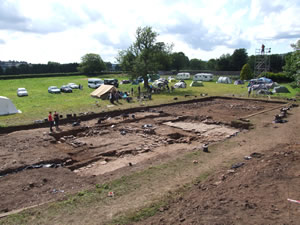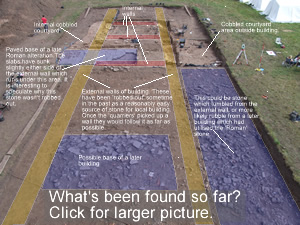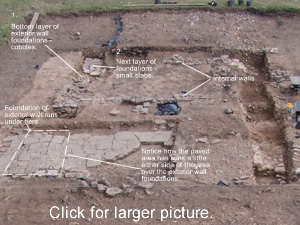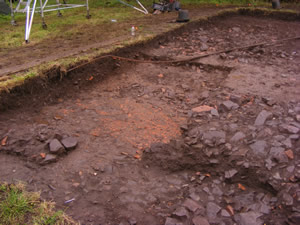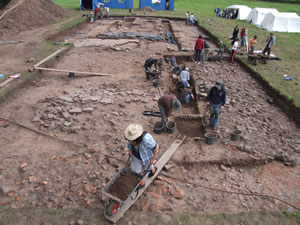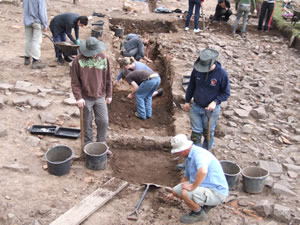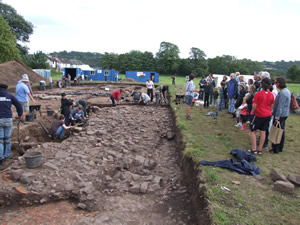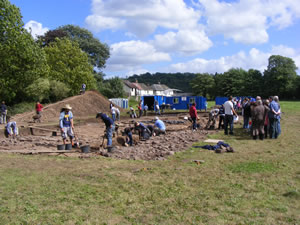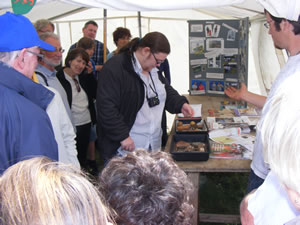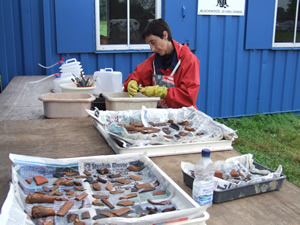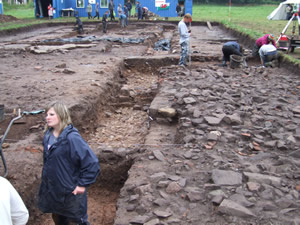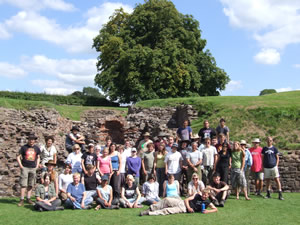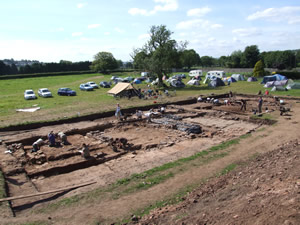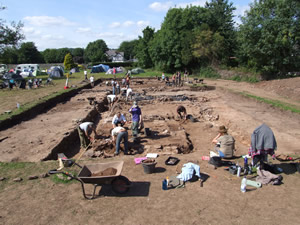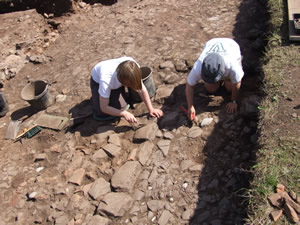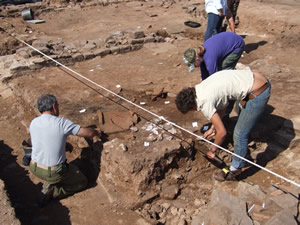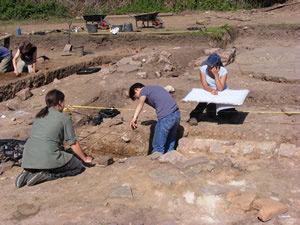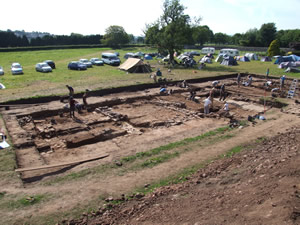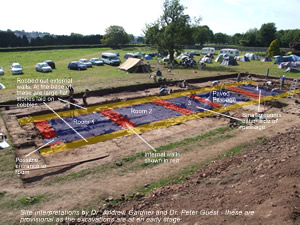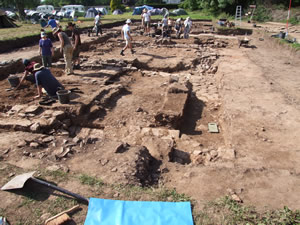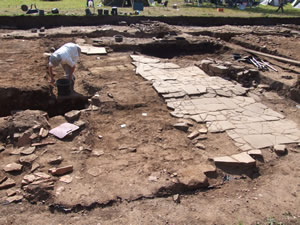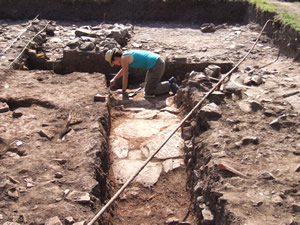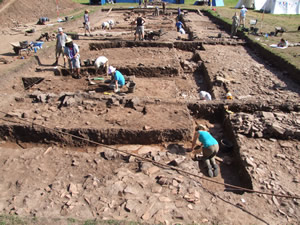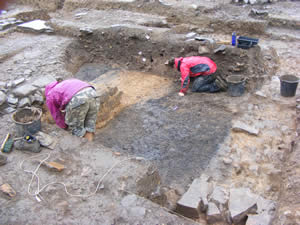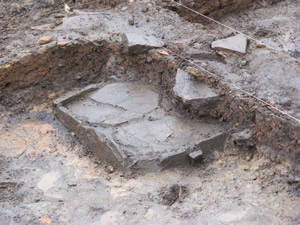Archaeology at CAERLEON 2010 - The Priory Field Dig
Archaeologists from UCL and Cardiff University continued their explorations of the Priory Field site during August and September 2010... and, as in 2008, visitors were welcome to watch their progress.
The project was directed by Dr. Peter Guest and Dr. Andrew Gardner and supported by Cadw, the National Roman Legion Museum, and many members of the Caerleon community.

In the Summer of 2008 a large rectangular area was dug to a depth of about 30 to 40 cms - just enough to reach the top of the Roman remains - and whet the appetite! It must have been hard for the archaeologists to cover the site with polythene and soil and leave it for two years.
This area of the Roman Fortress was occupied by a military store building - making this the first excavation conducted on such a site in Britain. The finds in the closing weeks of the 2010 dig, when the archaeologists were down to the original floor level of the store rooms, were nothing short of stunning. They are currently being cleaned and examined in the National Museum of Wales laboratories. It is planned that they will be permanently displayed at the Roman Legion Museum, Caerleon.
Visits to the Site
Public tours were available twice daily during the excavation season, which ran from August 9th - September 17th 2010.
Open Days were held on the 28th, 29th and 30th August 2010 with tours, displays of the latest finds and lots of activities for everyone including the chance to take part in a ‘mini-dig’.
Progress
The first stage involved clearing the infill over a section of the 2008 excavation and extending the dig by removing the topsoil of an area to the north-west. The excavation area was extended to explore beyond the late Roman paved area found in the corner of the previous excavation.
Please click on pictures for enlargements...
Week 2
Week 3
Week 4
Week 5
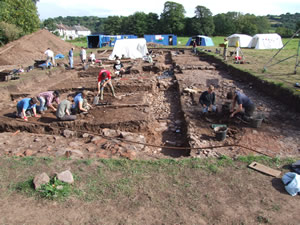
Notice the tent over room 2 where Dr Andrew Gardner records they are "revealing a scatter of military equipment. This seems to include some highly corroded iron objects which may have been scrapped and abandoned, and then fallen onto the floor. As well as being intrinsically interesting, the way the finds have come to rest should tell us a lot about the history of this room." See the Dig Blog September 7th.
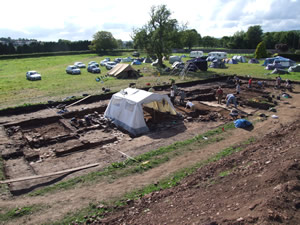
In the Dig Blog Dr Peter Guest reports that the deposits in rooms 1 and 2 "are producing large quantities of finds, especially iron and copper alloy objects as well as pottery and animal bone. The metal artefacts include some fabulous examples of Roman military equipment, such as scabbard chapes, belt plates, strap-ends and harness pendants, together with large lumps of iron which may need to be lifted in blocks and excavated later in the conservation laboratories. The coins we are finding still include later 3rd and 4th century bronze issues, but now we are beginning to recover more early coins including several silver denarii of the 1st and 2nd centuries. So, after almost 10 weeks of digging in 2008 and 2010 we are firmly within the Roman period and revealing lots of new information about Caerleon almost 2,000 years ago – amazing!" September 7th.
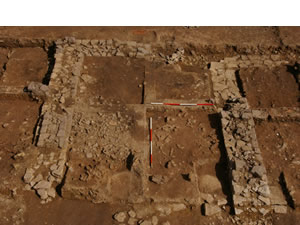
Room 2 - with tent removed. Among the amazing finds in this room were what may amount to several items of armour (see picture, right). The room has been excavated in 4 rectangular pits. The remaining dividing, unexcavated, parts are left so that the archaeologists have a visual record (as well as the ongoing records kept) of the different layers of activity.
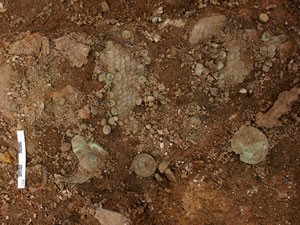
Some of the armour finds. Notice the small relief head on the larger piece in the lower left of the picture. The curators and conservators from the National Museum of Wales assisted in block-lifting the objects and surrounding soil. The objects will now be 'excavated' in the museum's labs - a painstakingly slow process - but the results will make it all worth while.
Week 6
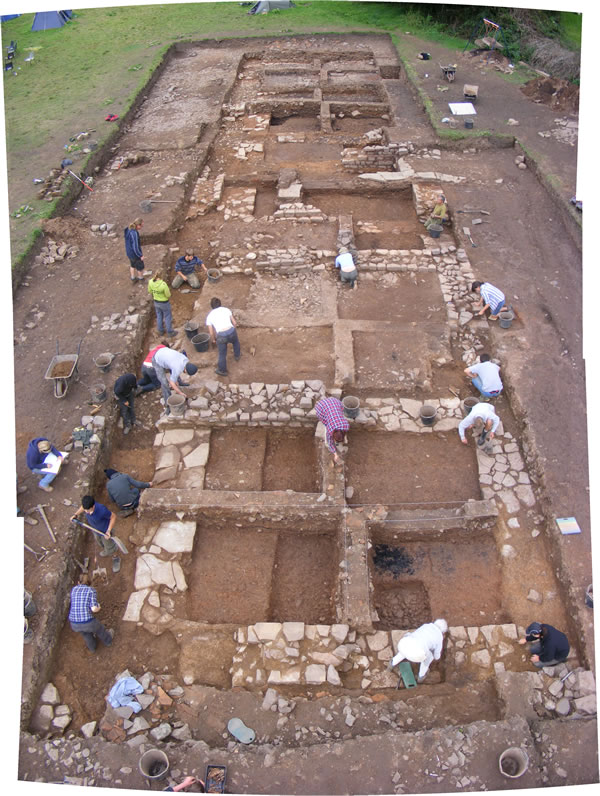
The last day of excavations - Thursday September 16th
To zoom in for a very detailed interactive view click here (1350K) .
